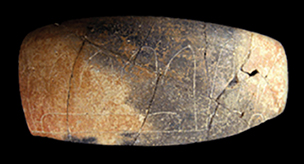Article contents
Preclassic ceramic economy in Belize: neutron activation analysis at Cahal Pech
Published online by Cambridge University Press: 15 July 2019
Abstract

This study uses neutron activation analysis of ceramics to examine economic change and increasing social complexity at the Preclassic Maya site of Cahal Pech in Belize (1200 cal BC–cal AD 300). Seven compositional groups were identified from the site's civic-ceremonial centre and two peripheral residential groups. Analyses indicate that both utilitarian and non-utilitarian ceramics were locally produced as early as 1200 cal BC, and that by c. 700 cal BC, fineware vessels were being exported into neighbouring parts of Guatemala. These results provide direct evidence for economic interaction between Maya lowland communities and for their increasing socio-political complexity.
- Type
- Research
- Information
- Copyright
- Copyright © Antiquity Publications Ltd, 2019
References
- 7
- Cited by




